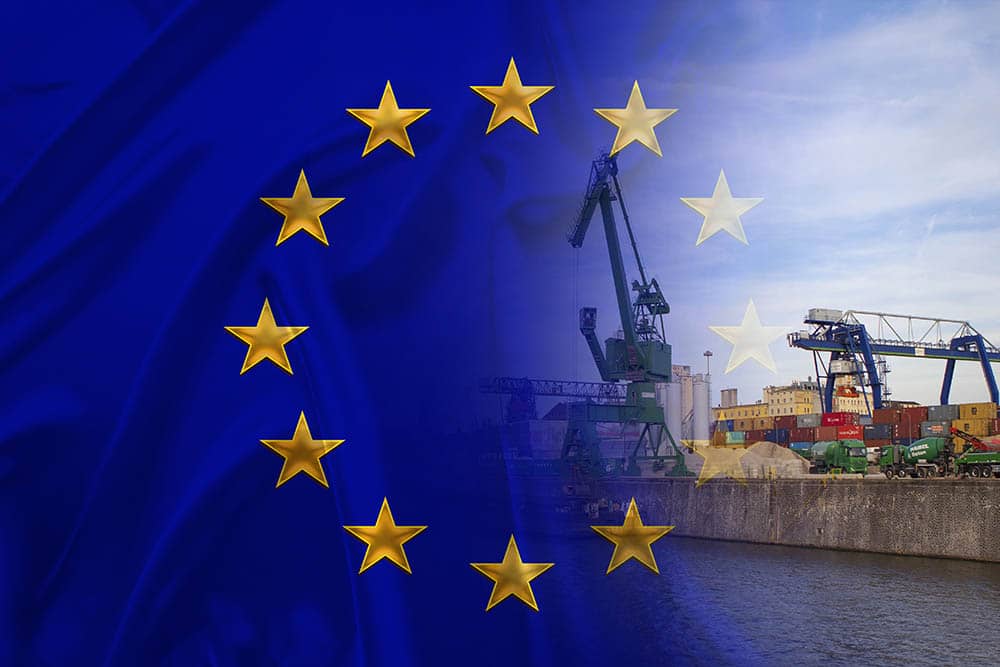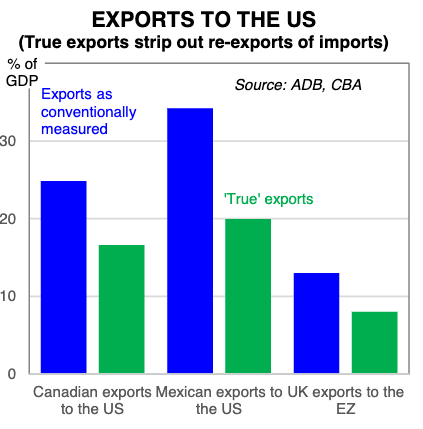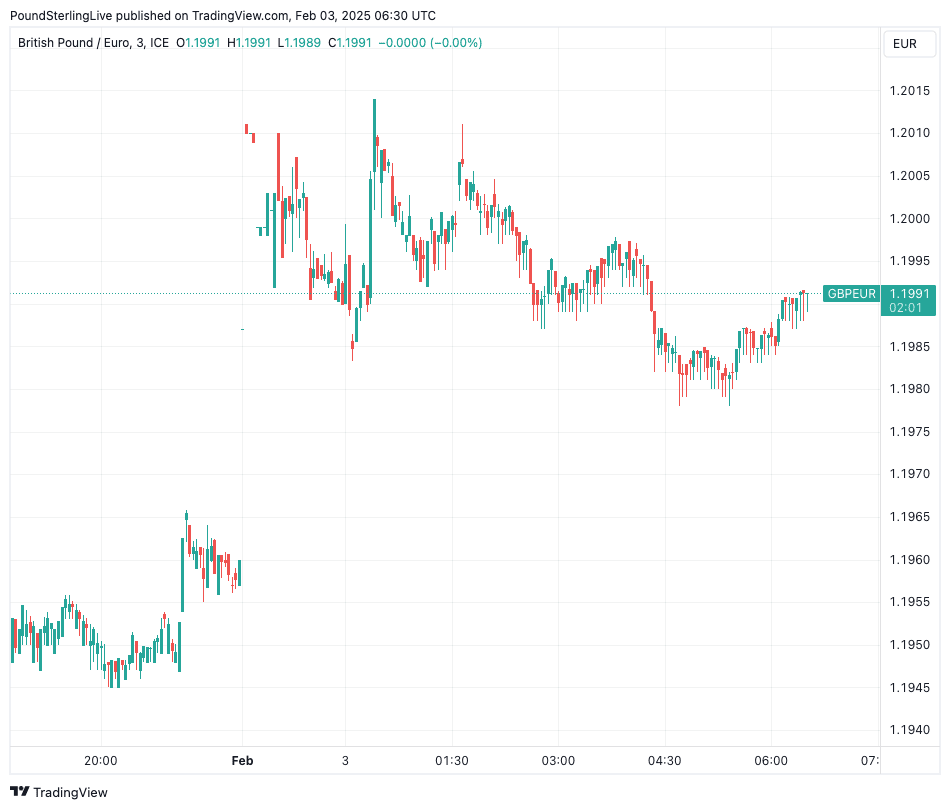a

Image © Adobe Images
Trump will hit the Eurozone with tariffs, but the UK is more insulated owing to its deficit in goods trade with the U.S.
Pound Sterling 'gapped' higher against the Euro at the opening of Asian FX trade, as predicted in our weekend note covering President Donald Trump's threat to sanction EU imports.
The Pound to Euro exchange rate opened at 1.2011 from Friday's close of 1.1964, hitting a high of 1.2032.
Asked by the press in the White House if he was going to place tariffs on the EU, Trump said on Friday, "Absolutely... the EU treat us very bad."
"It will definitely happen with the Europen Union," he said late on Sunday. "They're really taking advantage of us. We have over a $300BN deficit. I wouldn't say there is a timeline, but it'll happen very soon."
Mind the gap: GBPEUR gaps higher at the open as markets adjust for a tariff warn.
This weekend, Trump imposed a 25% tariff on imports from Canada and Mexico, with a 10% tariff placed on oil imports from both countries. A 10% import tariff was levied on Chinese goods.
These moves confirm Trump is not bluffing about tariffs, and the EU will soon suffer a similar fate.
Canada responded by imposing its own set of tariffs on C$155BN of U.S. imports, thereby kicking off a trade war in North America.
Mexico is set to implement tariffs, while China has also vowed to implement counteractive measures and file lawsuits against the tariff imposition at the WTO.

Image courtesy of Commonwealth Bank of Australia.
The Dollar jumped across the board on Monday, confirming the trade war trade to be a 'long' Dollar one.
"USD jumped by 1.3% at the open," says Joseph Capurso, Head of International Economics at Commonwealth Bank. "President Trump has gone faster and harder on tariffs than market expectations."
Currency markets had adopted a rather benign approach to Trump's tariff threats over the past two weeks, judging that the President would talk a hard line but ultimately water down his tariff threats in response to any concessions from foreign trade partners.
This prompted the Dollar to decline from late 2024 highs and afforded the Euro room to recover.
With tariffs coming through, recent relief unwinds and the tariff trade is put in play.
The British Pound is outperforming most G10 peers alongside the safe-haven JPY and CHF. This is understandable: the UK is more insulated against U.S. tariffs as the country is not a major exporter of goods and Trump has not mentioned the UK as a target thus far.
U.S. tariffs will hit those industries that drive EU export growth, most notably automobile manufacturing.
"They don’t take our cars, they don’t take our farm products,” Trump said of the EU. “They take almost nothing, and we take everything, and then millions of cars, tremendous amounts of food and farm products," said Trump on Sunday when answering questions from the press.
The tariffs are expected to weigh on Eurozone economic growth, weighing on the single currency.
"We continue to be bullish on GBP as we think a relatively hawkish BoE and a growth pickup in the UK relative to the euro area in 2025 will weigh on the cross in the coming quarters," says Kirstine Kundby-Nielsen, an analyst at Danske Bank.
In fact, the UK runs a rare goods deficit with the U.S., while holding a surplus in the trade of services.
Lloyds CEO Charlie Nunn recently said he believed that it could allow the UK "to really stand out."
That’s because of the structure of its economy, the comparative services space and the lack of supply chains heavily bound up in the U.S., he said.
In an FX world where tariffs are in focus, Pound Sterling is a relatively safe haven; having come under pressure in early January, pound exchange rates can recover during February.

